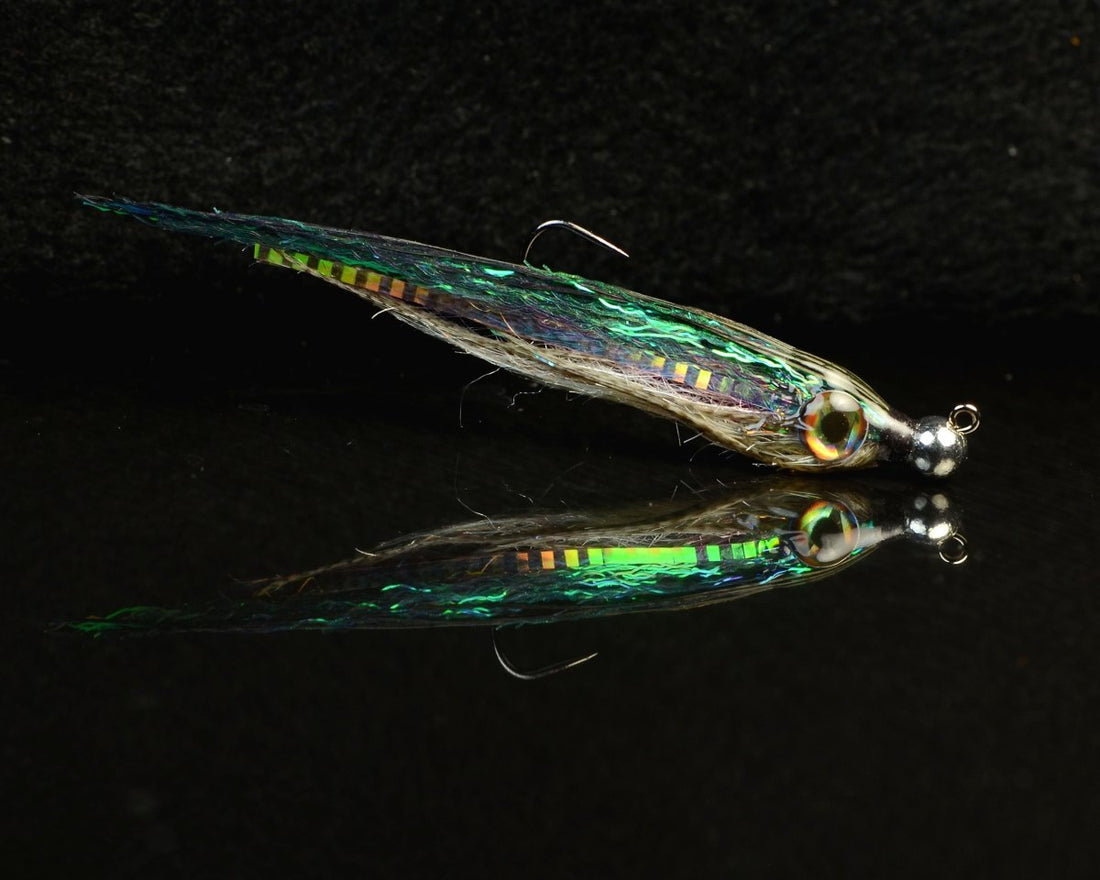
Simi Krink Minnow
Simi Krink Minnow
If you saw the last SBS with the Simi Seal and mallard you will notice this is just a slight variation to that pattern. It’s always fun to tie a realistic batifish pattern that automatically boosts your confidence on the water. Once you tie and fish a few of these flies I’m sure you’ll make room for more in your fly box. Thanks for tying along.
-Pete
Materials List:
Thread – Iron Gray Uni Thread 6/0
Tail – Mallard Feathers Medium Dun
Hook Body – Spawn Siimi Seal UV Seal the Deal
Shank – Spawn Micro Jig Shank 60*
Shank Body – Same as hook body
Body Collar – Mallard Medium Dun
Dorsal Flash – Snake River Fly Peacock Krinklezon
Topper – Nature’s Spirit Peacock Stick Herls Muskrat Gray
Resin – Solarez Thick and Thin
Step 1: Place your hook in the vise.

Step 2: Begin your thread on the hook shank and wrap back to where the shank just begins to bend; about halfway between the hook point and barb point. Bring your thread forward to roughly in line with the point to tie in the tail feather.
Step 3: The feather we want for the tail will have fibers slightly longer than the hook shank. Trim some fibers from the tip of the feather and use that spot as your tie in. The feather should be tied in with its top, or convex side, facing the ceiling.
Step 4: Wrap your feather 5-6 turns making sure to gently coax the fibers rearward with your off hand fingers as your working hand is wrapping the feather. Tie off, remover the excess feather and cover neatly with thread wraps. At this point make a thread loop where the feather was tied off. The loop should be around 5 inches in length.











Step 15: To finish the head and eyes, simply superglue the eyes in place using the Lateral Scale as your guide. Allow the glue some time to cure. The way I like to finish this style of resin head is to use one layer of Solarez Thick on both the top and bottom of the head, curing with a UV torch in between. At that point I do two thin layers using Thin Solarez over the eyes and sides to blend in with the profile from the Thick resin. Happy Fishing!




2 comments
That’s awesome, Pete! Definitely going to have to try it out!
WOW ! That’s even more beautiful than Ms. Wonderful